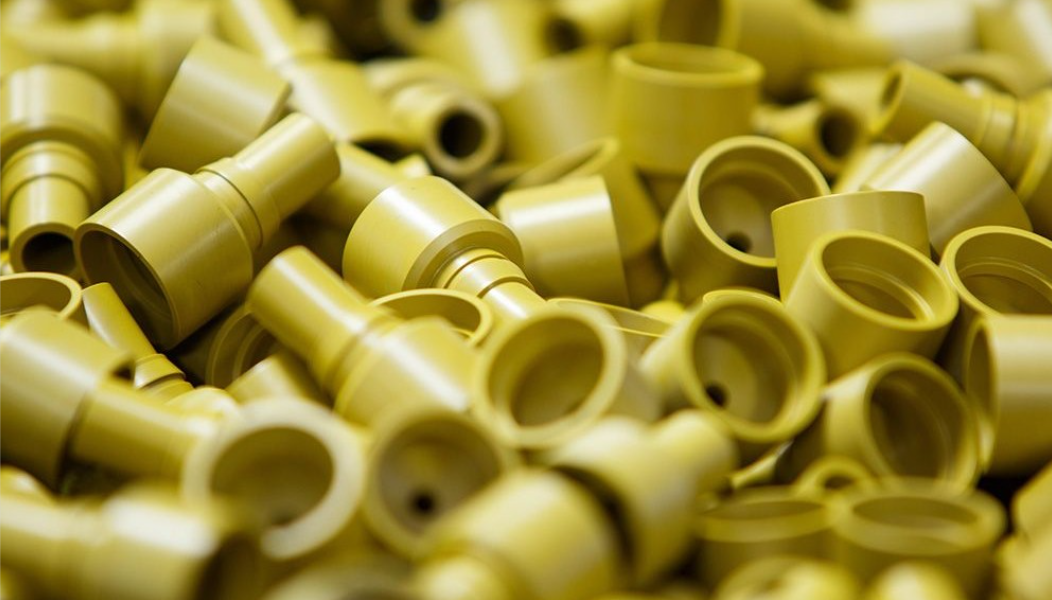Viscosity is one of the most important basic factors of plastic processing, is the quantitative expression of fluidity. Viscosity is affected by melt temperature, pressure, shear rate, and relative molecular weight, which are discussed in detail here.
- Temperature
The influence of temperature on viscosity is of practical significance when the shear rate is determined. Generally speaking, the sensitivity of plastic melt viscosity is stronger than that of sheer action. With the increase of temperature, the viscosity of plastic melt decreases exponentially. This is because as the temperature increases, the motion of the intermolecular chains will be accelerated, which will reduce the entanglement of the plastic chains, and the increase of the distance between the molecules will lead to the decrease of viscosity
For different plastics, viscosity affects temperature to different degrees. Polyformaldehyde is the least sensitive to temperature change, followed by polyethylene, polypropylene, polystyrene, and cellulose acetate. In practical operation, for melt with good temperature sensitivity, it can be considered to improve the plastic molding temperature in the molding process to improve the plastic flow performance, such as PMMA, PC, CA, PA. However, for plastics with poor sensitivity, the increasing temperature is not obvious to improve the flow performance, so generally, do not use the method of increasing temperature to improve its flow characteristics.
- Pressure
Plastic melts are compressible because of the tiny spaces between the molecules and between their chains, known as free volumes. During the injection process, the maximum external pressure on the plastic can be up to tens or even hundreds of MPa. Under the action of this pressure, the distance between macromolecules decreases, and the intermolecular force increases makes the chain dislocation more difficult, which is reflected in the increase of the overall viscosity. But different plastics under the same pressure, the degree of viscosity increase is not the same. Polystyrene (PS) is the most sensitive to pressure, that is when the pressure increases, the viscosity increases quickly. Compared with low-density polyethylene (LDPE), high-density polyethylene (HDPE) has less influence on viscosity under pressure.
Excessive pressure can significantly improve fluid filling. Due to the increase in viscosity, filling performance sometimes may decline, not only resulting in excessive power loss and excessive wear of equipment but also leading to overflow and increasing the internal stress of products and other shortcomings. But too high pressure will also appear products deformation and other injection defects, resulting in excessive power consumption, too low pressure will cause a material shortage.
- Shear rate
The higher the shear rate, the lower the viscosity. In the case of very low and very high shear rates, the viscosity changes little with the shear rate. Although the viscosity of most plastics melts decreases with increasing shear rate, the sensitivity of different plastics to shear rate (shear stress) varies. Within a certain shear rate range, increasing the shear rate can significantly reduce the viscosity of plastics and improve their flow performance. As far as possible, process adjustment should be carried out in the range where melt viscosity is not sensitive to shear rate, otherwise, unstable processing and quality defects of plastic products will be caused by fluctuation of shear rate.
- Plastic structure
with the increase of the relative average molecular mass at a specific temperature, the greater the relative molecular mass, the stronger the intermolecular force, and the higher the viscosity. The smaller the relative molecular weight of plastics, the less the dependence of viscosity on the shear rate. The greater the molecular weight, the greater the dependence of viscosity on the shear rate. The resin with wide molecular weight distribution and bimodal molecular weight distribution had low melt viscosity and good workability. The low molecular weight chain can improve the fluidity of resin melt.
- Low molecular additive
Low molecular weight can reduce the force between macromolecular chains, thus reducing the melt viscosity and reducing the viscosity fluidization temperature. The viscosity of the polymer melt directly affects the difficulty of injection molding. If the molding temperature of plastic is controlled below its decomposition temperature and the shear rate is 103-1 seconds and the melt viscosity is 50-500 para-seconds, injection molding is easier. But if the viscosity is too large, it needs to have a higher injection pressure, the size of the product is limited and the product is also prone to defects; If the viscosity is too small, the phenomenon of mold overflow is serious, product quality is not easy to guarantee, in this case, the nozzle is required to have a self-locking device.





